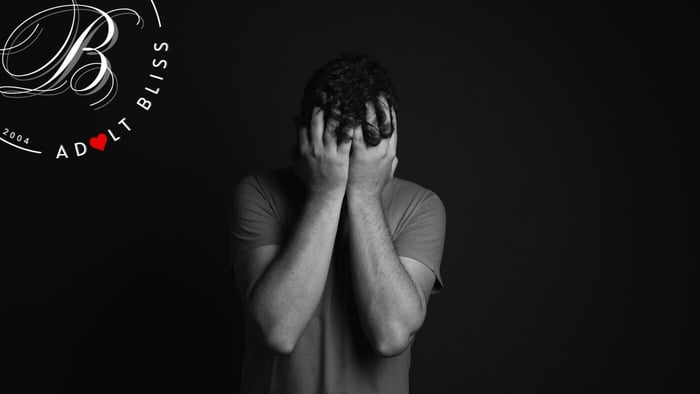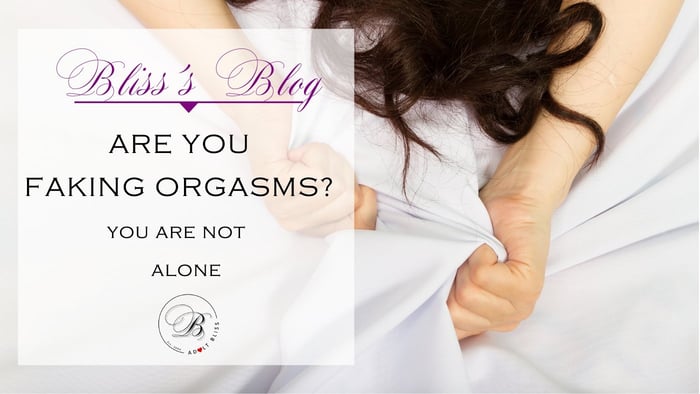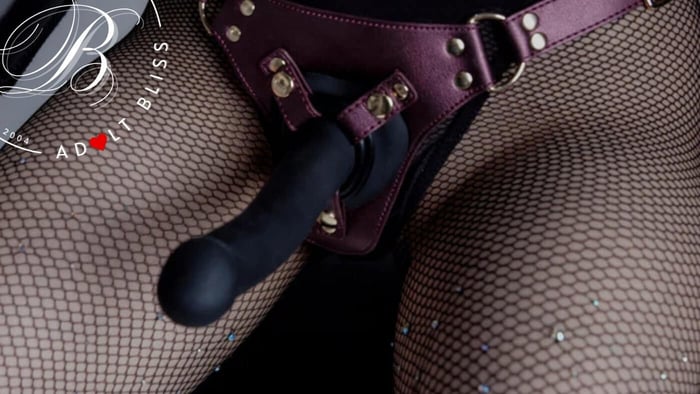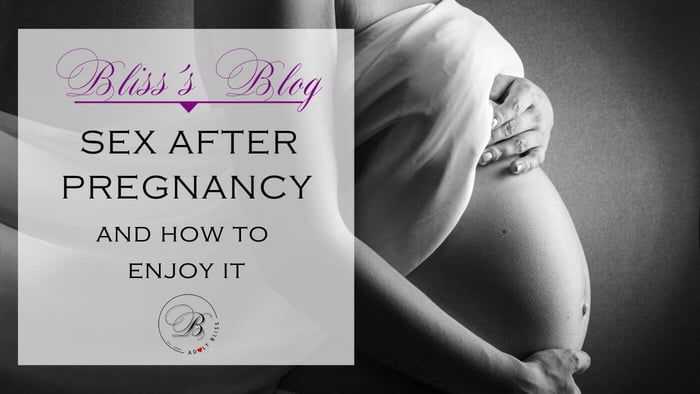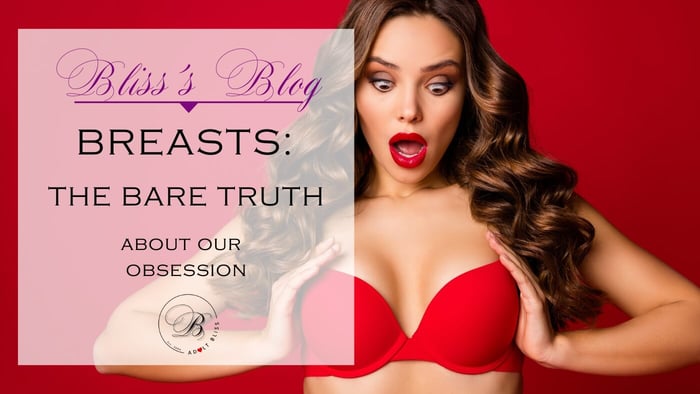
Breasts: The Bare Truth About Our Obsession
Jump To Section
The Truth About Boobs
Here's one of the oldest questions from the annals of biology, psychology and anthropology; why are breasts like train sets? They're designed for children but played with by men.
Put another way, are female breasts inherently sexual objects or have we, through millennia of culture and taboos, sexualised them?
Are Breasts Inherently Sexual or Culturally Sexualised?
Ask most straight males and they'll profess a fascination with mammaries that goes back further than they can remember, a craving for them that feels as primal and biological as the desire to sleep or eat when tired or hungry.
Cultural Conditioning and the Queer Perspective
Interestingly, there isn't any research we're aware of that quantitively explains whether LGBTQ women are similarly consumed with boobs. As Eden from Adelaide says; "I can't speak for all gay women, but I assumed it would be much of a same same split. I do like boobs, but am more an arse person myself. I wouldn't be surprised if queer folk like butts more. I think only straight men are programmed to love boobs as much as they do."
What if they're wrong? Many of us raised in the urban West have been exposed to constant stimulus about breasts from Page 3 girls to internet porn.
Breast Fascination: Primal Urge or Media Myth?
Might we simply be picking up on cues from the culture around us about how naughty and rarefied breasts are?
Florence Williams, who published a book called Breasts: A Natural and Unnatural History in 2013, told Salon.com while promoting the book the claim all men all over the world all the time are/have been obsessed with female breasts has never been proven, and that our breast worship might be cultural.
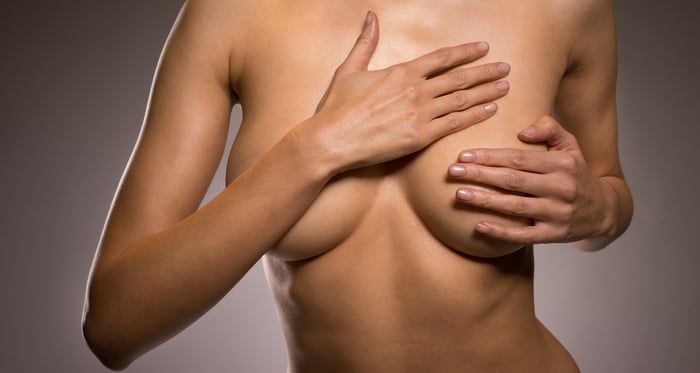
"We have such strong cultural biases about breasts that it's easy to see how some of these anthropologists may just be projecting their own beliefs back into evolutionary times," she said.
Once and for all, it's time to try and divine the truth about the boob.
A Biological History of Breasts
First Buds: The Origins of the Mammary Gland
Back in 2015, Swiss scientists identified a class of genes used for the formation of organs and limbs that were recruited into the construction of a new type of body part - the mammary gland.
Lactation then evolved at some point over 200 million years ago, before mammals even really existed. According to Williams, it probably began as a substance to protect offspring from infection. 'Many of those qualities have been conserved. Breast milk today is not just filled with nutritional substances but ... these immune system-boosting substances ... It also seems to be filled with bacteria too, so it may be inoculating the infant's immune system ... as to which bacteria are good and which are bad. But then, after the period between 13 and 5 million years ago when we last shared a common ancestor with the chimpanzees, something else changed.
Human Breasts Are Unique
The breasts of human females became permanent, appearing at the onset of sexual maturity and remain unchanged (gravity, adequate nutrition, etc notwithstanding) for life, remaining visibly prominent throughout the reproductive cycle.
The mammary glands and genitalia of most other female mammals swell in tandem with her ovulatory schedule, bringing her into 'season' and driving the males of the species wild with lust. During the periods when neither their owners nor potential suitors are interested in mating, breast tissue shrinks and all-but disappears.
That seems to prove that breasts in other animals aren't sexually appealing in themselves, they simply accompany a flood of horny pheromones to signal sexual receptivity. But it might surprise you to learn that bonobos (a smaller, more peaceable chimpanzee species) have been observed in the wild stimulating their own nipples while masturbating.
Desmond Morris and the Naked Ape Theories
Then there's the longstanding theory from zoologist Desmond Morris in his 1967 book The Naked Ape that breasts are there to remind males of the reproductive delights to be had in female buttocks.
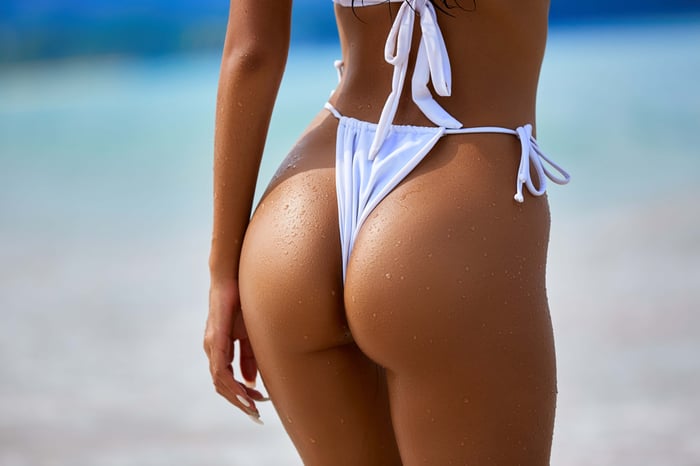
Before we were bipedal and had the ability to mate face to face, the male of the species never saw boobs clearly while we were on the job. When we started to interact (as well as just mate) face to face, the theory says that breasts evolved to become a constant reminder of the butt's sexual allure. Natural selection might then have favoured humans females with permanently prominent breasts.
He had a related theory that females developed fatter, redder lips on her mouth because our upright gait also hid her vulva from view, a sight males enjoyed with impunity back when we were on all fours.
Morris' theories are still disputed, but there's no doubt the human body is covered with sexual signalling devices like boobs and red lips. Another one is that human males have the biggest penises as a proportion of body size compared to the other primates. Blokes' shaggy beard and broad shoulders signalled virility to potential female mates.
We're also the only species with specialised sweat glands in the genital area that signalled our receptivity through pheromones back before we covered them with pelts and clothes.
The Cultural Cult of the Breast
But you can't discount what a few millennia of culture has done to our brains – any anthropologist will tell you it, as much as biology, drives our evolution, maybe more.
Modern Taboos and Public Outrage
If our love of breasts was purely biological, why else would they cause such a long history of shame, hangups, taboos and scandal? We're not just talking about Victorian-era ladies excommunicated from polite society after accidentally flashing an ankle, either – we still devolve into sniggering schoolkids or horrified schoolmarms about breasts well into the 21st century.
When Janet Jackson accidentally exposed hers during the 2004 Super Bowl halfway show, the media reaction was so hysterical you'd think she'd sacrificed a baby on stage.
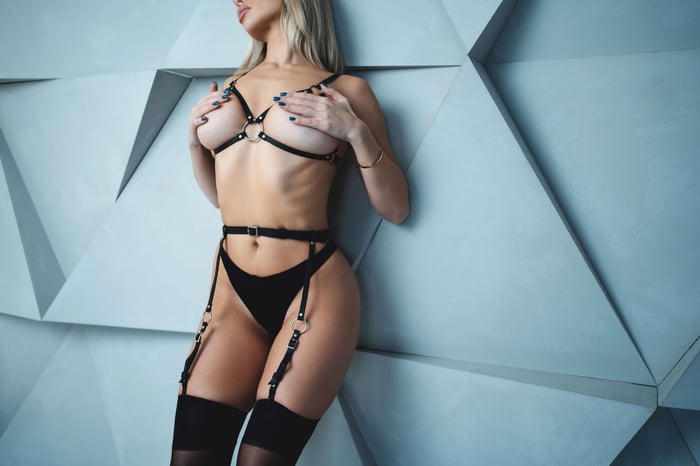
In 2023 a Melbourne judge ordered a breastfeeding mother out of his courtroom, and stories of nursing mums minding their own business only to face abuse abound online.
Breasts have consumed our thoughts for so long it's easy to mistake cultural impact for being biological fact. Canadian science journalist Patchen Barss' 2011 book The Erotic Engine argues that images concerned with sex have driven development of communications systems going back to the days of cave paintings.
The Venus of Willendorf and Ancient Fantasy
One of the most famous anthropological artefacts he talks about is the Venus of Willendorf, an 11cm tall stone figure that was discovered in Austria in 1908.
If the first thing you notice is the prodigious booty and boobs (which the figure itself is caressing with apparent appreciation), you're not alone. The heavy breasts and Rubenesque figure might be a fantasy about abundant resources – a primary concern 29,000 years ago when the artist carved it – but there's no question he/she considered an eye-popping rack to be one of the pinnacles of femalehood.
But despite the fact that a forgotten European protohuman 30 millennia ago loving boobs seems to prove they're inherently sexual, it's still not that simple.
Are Breasts Sexual Everywhere?
In a 1951 anthropology study, only 13 of the 191 cultures investigated considered breasts to be sexually important. Only 13 cultures (not even the same 13) used breast stimulation during sex, and they overlapped with cultures where men considered breasts to be sexually important in only three cases.
According to the final report; 'Breasts are less eroticism in subsistence societies where women go topless than in our own—where they are exploited in advertising, and in pornography'.
In fact, a 1995 book reports an anthropologist telling friends in Mali, Africa about breast stimulation as sexual foreplay and getting responses 'ranging from from bemused to horrified'.
So while we search for a definitive answer about whether the love of boobs is cultural or biological, such varied practices and tastes only prove how contradictory and varied humans are – plenty of other sexual practices you'd assume are universal actually aren't. As 2015 research revealed, even the romantic pash isn't the norm across most cultures, some even considering it revolting.
But in those societies where we do become breast obsessed, something happens in the years between nursing off our mother and having our tween minds blown when we find an older brother's Penthouse magazines under a bed. What is it and when does it occur?
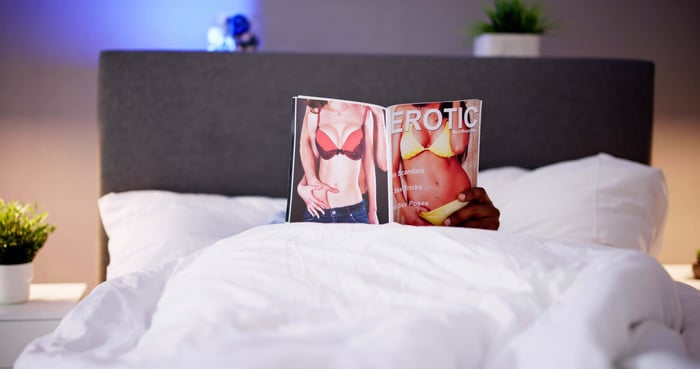
Is It All in Our Heads?
Breastfeeding, Sexuality, and Cultural Discomfort
"I think this might be tied to a culture's views of sexuality in general," says Dr Amy Houlihan, a Professor of Psychology at Texas A&M University who studied sexualised evaluations of public breastfeeding. "If sexuality is at least somewhat taboo, sexual body parts are covered up and seldom discussed openly. It might cause a fixation with them as 'sexual' body parts with little attention paid to non-sexual functions like breastfeeding."
When Houlihan and her colleague did their study, they figured such taboos were partly responsible for negative responses to breastfeeding. When we're used to thinking of boobs as sexual, even seeing them in a non-sexual context makes us uncomfortable.
Biology Still Has a Say
Breasts Signal Maturity and Fertility
Culture aside, breasts as biological devices is beyond doubt. Just as the size and shape of your nose says nothing about your sense of smell, breasts do the same jobs regardless of the amount of fat inside, the position or size of the areola or anything else.
Every healthy breast contains the same machinery so there's no correlation between size or shape and milk production, incidence of breast cancer or even how uncomfortable a mammogram is.
Along with that, the evidence for the sexual nature of the breast being a basic instinct is pretty compelling. The fact that they aren't only prominent when their owner is nursing or in estrus (season) says something.
Magic Wand Rechargeable

$249.95
The Magic Wand® Rechargeable consistently sits atop reviewers’ and mainstream publications’ lists of best vibrators. Named “best overall” by the New York Times three years...… read more
"Both things are true, to some degree," says Houlihan, when asked whether breast obsession is cultural or biological.
"Female breasts are inherently sexual to some extent because they're a biological – and visible – cue to sexual maturity. Typically sexual maturity features are ones people find sexually attractive. But they've certainly been sexualised culturally as well. American culture, for example, sexualises female breasts a lot, but that's not necessarily universal."
A body called the National Sexuality Resource Center agrees that one of the jobs of breasts is to signal sex without being themselves sexual, researchers calling them a 'biological deception'. Like the Venus of Willendorf alludes to, heavy, healthy boobs might signal their owner's ability to store fat, a critical weapon in the battle to bear offspring.
In contrast, a female body with a flat chest might tell potential mates she's too young or underfed (and therefore infertile), and one where gravity and age have made an impact might signify her reproductive prime is behind her.
Nature might also have coopted breasts to keep a man interested long term because of the kids. We have the longest infant development period in the animal kingdom, and even in hunter-gatherer times the hardiest human couldn't fend for itself until the early teens.
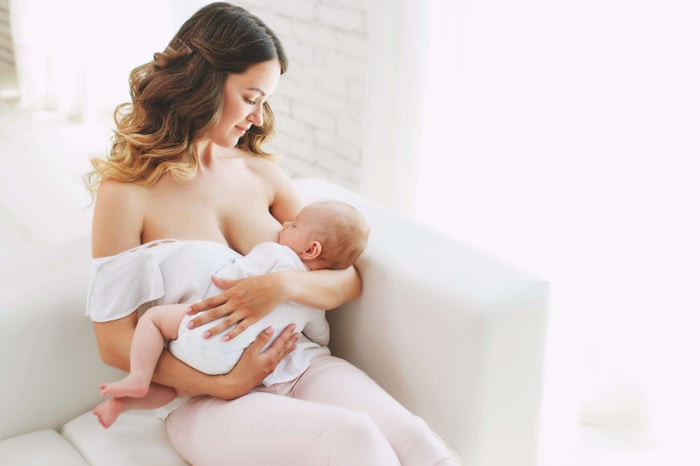
That meant nature had to give two parents a reason to stay together beyond just a quickie. There are theories that's how love itself developed, but a more prosaic reason might be that if breasts all-but disappeared after nursing was over (like in most mammals) roving male eyes might look elsewhere for bewitching boobs.
"Human females being interested in sex even when they're not fertile might be adaptive for the species, especially in the context of female orgasm which isn't technically necessary for reproduction" says Houlihan. "Female sexual pleasure might have served an evolutionary role in mate selection and retention. A strong bond between parents is good for the offspring, and mutually pleasurable sex is one way to form and maintain that bond."
Biologically speaking, it's also a bit weird how female breasts stay so visible on the female body long after her nursing and fertile years are over altogether (post-menopause), something psychologist Nigel Barber agrees is something of a mystery. "It might reflect the fact that women typically remain sexually active after menopause and that the breasts contribute to sexual satisfaction for both individuals," he says.
Fit for purpose
As inconvenient and plain stupid as we find some aspects about bodies (joint pain, cancer, external male genitalia just asking to be kicked), nature is smart. Any downsides about our parts or behaviour are outweighed by the reproductive advantages they gave our ancestors or we wouldn't have them.
Boobs can be ungainly, cause pain and invite harassment but biologically, they attract potential mates. Such trade offs exist across the animal kingdom – if you're a male peacock there's no better way to advertise your presence to predators than your exuberant tail display, but nature is betting it'll help you score with the hottest chicks and pass your genes on.
Our genetic heritage also seems to contain hard programming around the sexual attraction to boobs. According to the Journal Ethology and Sociobiology, 'Female figures with large breasts and narrow hips were rated as most youthful, attractive, and desirable ... larger body size, a high waist-to-hip ratio, and larger hips make the female figure appear older, unattractive, and less desirable'.
Then there's the quantitative scientific data that confirms the breast itself is connected to the mechanics of sexuality in the body. Pioneering sex researchers Masters and Johnson found that breast volume increases during sexual arousal along with engorged areola and nipple tissue, and a 2004 study found women with large breasts had higher levels of a hormone that might increase fertility, lending credence to the theory that nature tricks us into thinking big boobs are sexier because their owners have more chance of conceiving.
The female brain also has three sensory maps that become active during masturbation, one each for the vagina, cervix and clitoris. During nipple stimulation, all three light up, which seems to prove scientifically that breasts don't only look sexy to partners, they feel sexy for their owners.
The other thing to remember is that a human being is made up of a constant dance between biochemistry, preference and behaviour, and countless studies have shown how the balance of neurotransmitters or hormones can profoundly affect our state of mind. One of your favourites (maybe without you even knowing) is oxytocin.
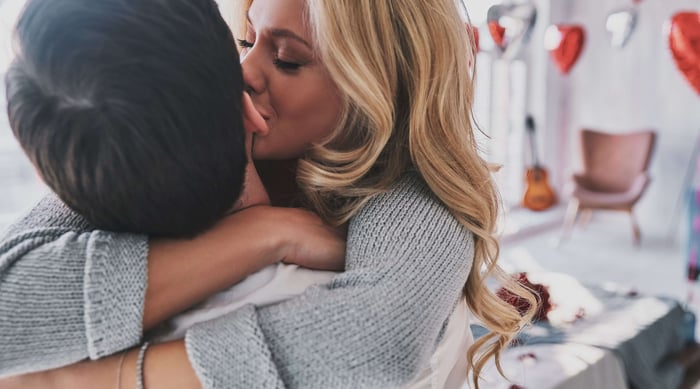
Oxytocin, Bonding, and the Dual Roles of the Breast
Often called the bonding hormone, oxytocin makes us feel in love, either with a lover or a baby. It flows heavily during childbirth, lactation, sexual arousal and orgasm, so it seems like a pretty straightforward physiological process to bond with our baby or feel romantically close to our lover, maybe encouraging us to stay together to give the resulting offspring the best chance of survival.
But it's telling that two very different activities can lead to similar responses and outcomes. When a woman's nipples are stimulated during breastfeeding, the oxytocin flooding her brain focuses attention and affection on the baby (https://www.livescience.com/23500-why-men-love-breasts.html). But together with research we've already seen (that nipple stimulation activates the same neural maps as that of clitoral or vaginal stimulation), a partner sexually kissing or massaging a breast prompts a similar rush of oxytocin, focusing attention and affection on her partner, strengthening the bond.
Pleasure, Evolution, and Breast-Obsessed Biology
How did that lead to an obsession with boobs? Maybe the potential partners who learned to make themselves more desirable lovers by stimulating their partner's breasts during the act got more action, had more babies and were selected by evolution to slowly edge less caring lovers out of the gene pool. As the above story says; 'It's a behaviour that males have evolved in order to stimulate the female's maternal bonding circuitry.'
In fact, breastfeeding and sexual breast stimulation are so closely linked from an anatomical perspective some women experience intense pleasure during breastfeeding – even orgasm – and some women orgasming from breast stimulation alone.
The breast seems built for sexual pleasure, the mood primed by our hormones in a variety of activities and with a variety of other humans from lovers to babies.
And then, as if nature's played its greatest trick on us with a gland that feeds babies and has seemingly no use in men, a 2006 study from the Journal of Sexual Medicine found 51.7 percent or undergraduate men in the UK surveyed said they found nipple stimulation arousing.
The Verdict
So to return to the essential question. Are boobs sexual or have we made them so by hiding them away, making them taboo and sniggering at scandals? Opinions abound, the jury's out, and the answer simply might not be as simple as the question. The most compelling case to make seems to be 'both'.
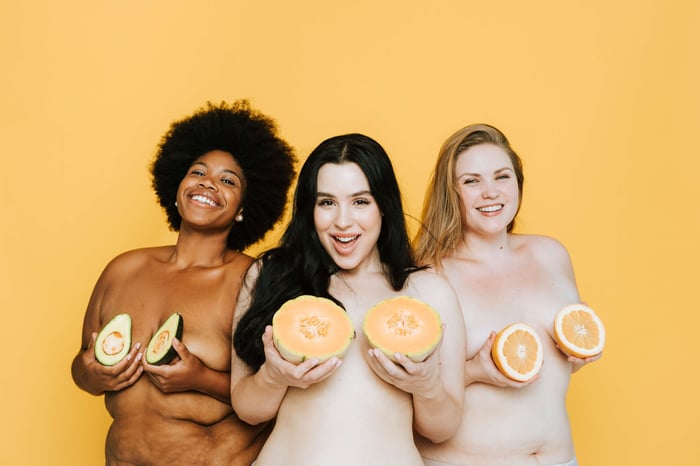
Nigel Barber; "If female breasts play a sexual role in all societies, as seems to be the case, a sexual response can't be purely learned. Even so, if sexual arousal is paired with a visual stimulus of breasts, the response may be intensified through classical conditioning. In societies where women go topless, the sexual significance of breasts is played down but they still figure in sexual behaviour."
In other words, the love of boobs begets the love of boobs, an so on. It's really quite Biblical, and considering the fortunes and kingdoms that have risen and fallen in the pursuit and preoccupation of a couple of half kilograms of fat (the Australian average), that's quite fitting.
FAQs
Why are human breasts permanent while other mammals' aren't?
Human females have breasts that stay prominent throughout life, likely due to evolutionary adaptations for signalling sexual maturity and sustaining long-term pair bonds—unlike most mammals where breast size fluctuates with fertility.
Is the sexual attraction to breasts biological or learned?
Likely both. There’s biological evidence suggesting breasts signal fertility and maturity, but cultural influences—media, taboos, and societal norms—can intensify breast obsession through conditioning and social cues.
Do all cultures find breasts sexually attractive?
No. Anthropological studies show that many societies don’t sexualize breasts. In cultures where toplessness is normal, breasts tend to be viewed more as functional rather than erotic.
Can breast stimulation lead to orgasm?
Yes. Research has shown that nipple stimulation activates the same sensory regions in the brain as clitoral, cervical, and vaginal stimulation. Some people can even orgasm from breast stimulation alone.
Why do people respond negatively to public breastfeeding if breasts are functional?
In cultures where breasts are heavily sexualised, seeing them in a non-sexual context like breastfeeding can create cognitive dissonance and discomfort—often driven by taboo, not biology.
Are large breasts more fertile or better at producing milk?
No. Breast size is mostly fat content and doesn't impact milk production or fertility. Every healthy breast, regardless of size, contains the same structures for feeding and function.
Does oxytocin really play a role in both sex and parenting?
Yes. Oxytocin, often called the "love hormone," is released during both breastfeeding and sexual activity. It helps create emotional bonds—whether between a parent and child or romantic partners.









